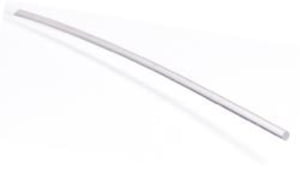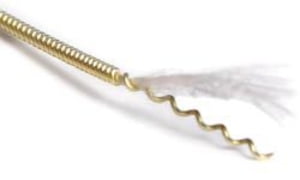5. Classical Guitar Strings
Until the early twentieth century, classical guitar strings, like those of many stringed instruments, were made from dried animal gut. Though the term catgut is often used, most gut instrument strings were in fact made from sheep gut. Fortunately for the sheep, these have now been almost completely replaced by nylon cores and soft metal windings.
Plain Strings
The standard material used for plain classical guitar strings (E, B and usually G) is solid, round-section nylon.
This is usually transparent, but some manufacturers offer carbon plain strings - these are made from nylon with a small percentage of carbon, which results in a solid black colour and a more percussive, overtone-rich sound.
Wound Strings
The core of wound classical strings consists of a large number of very fine threads - nylon having replaced the traditional silk material. The outer layer is made from a metal winding similar to that used for electric/acoustic wound strings.
A variety of metals are employed, but most serious players favour silver-plated copper.
Tension
Classical strings are categorised by tension rather than diameter, because for a given diameter, different tensions are achieved by changing the precise chemical composition of the nylon. The most common tensions are Light, Medium, Hard and Extra Hard. As with steel strings, higher tension gives improved tone and volume, but can be harder to play.



